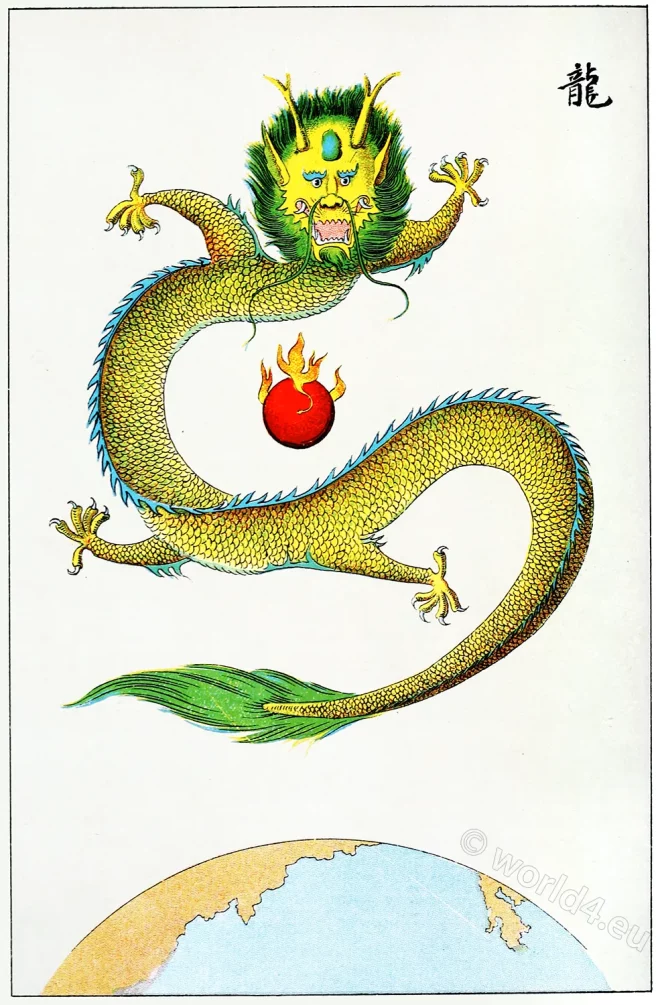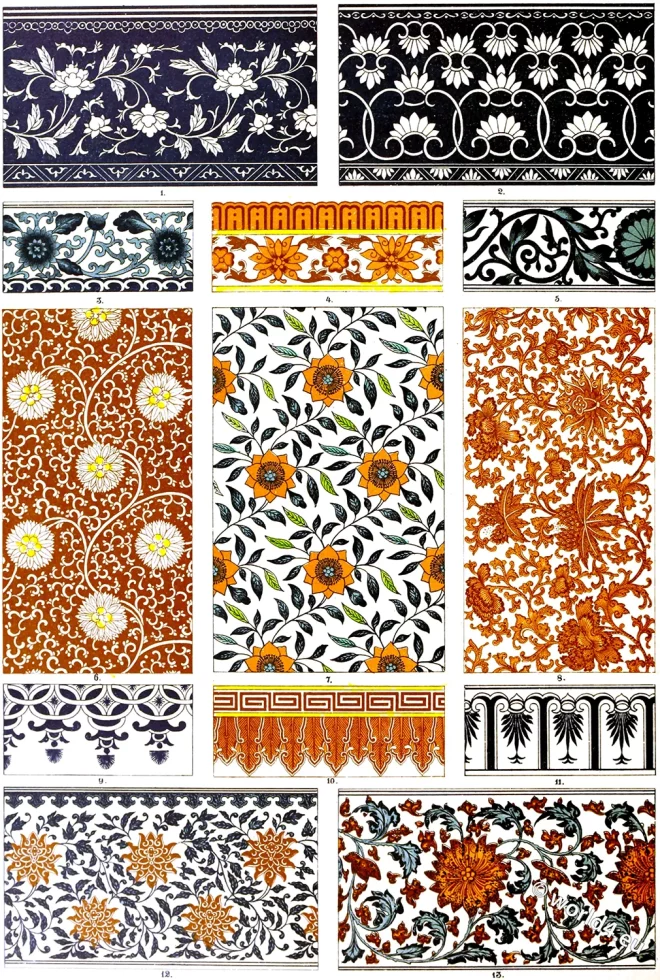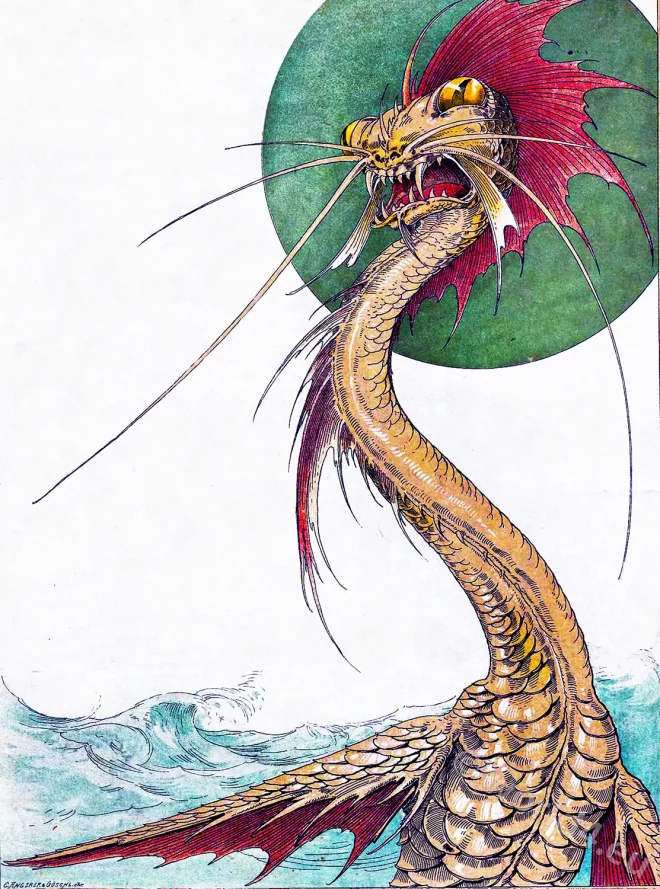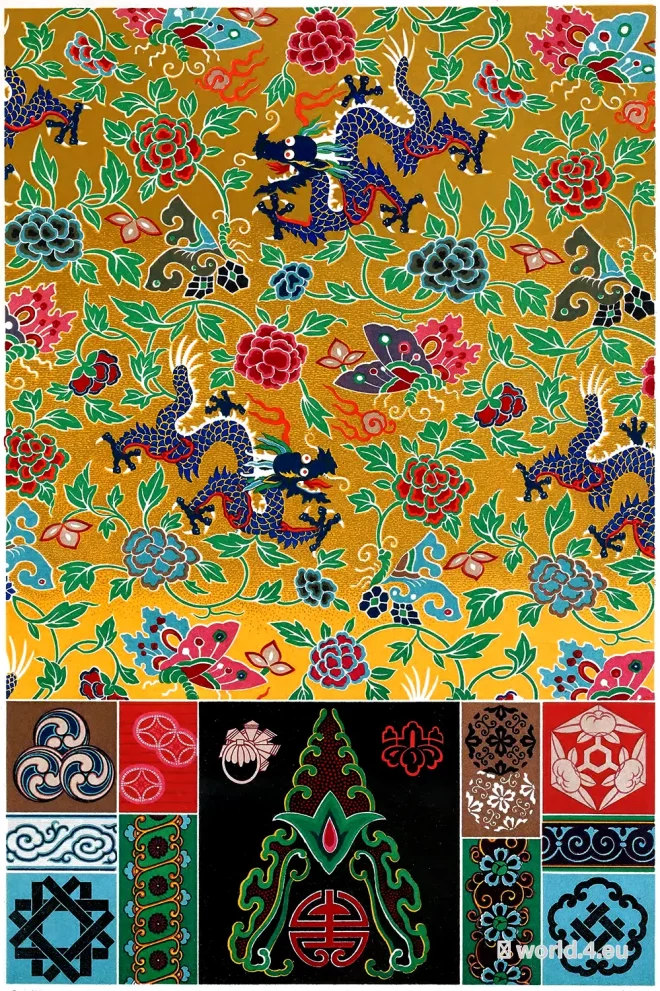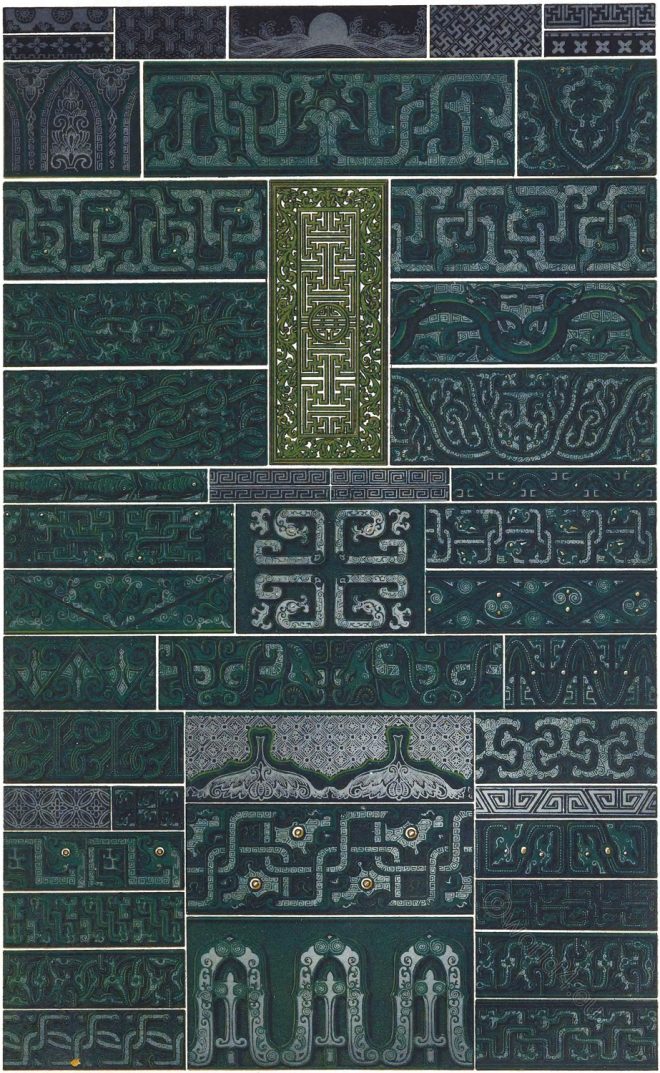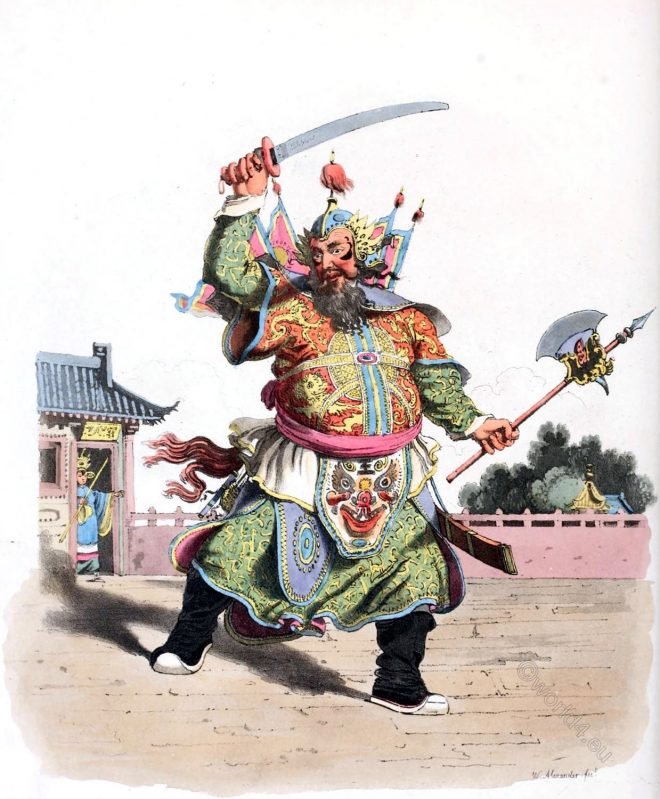Chinese dragon and its cultural significance, in mythology and folklore.
Category: China
Traditional clothing from China. Chinese National Costumes
Ornamentation in Chinese porcelain painting.
Ornamental treasures. Chinese. Painting, by H. Dolmetsch.
The dragon in Asian art and culture.
Decorative motives of oriental art by Katherine M. Ball. The dragon in Asian art and culture.
Silks and Flowing Patterns. Chinese and Japanese Art.
The piece of silk representation is one of the finest examples of the decoration of woven fabrics that it is possible to study.
Cloisonné Enamel. Specimens of Chinese and Japanese Art.
The various specimens of enamel by Auguste Racinet.
Specimens of Chinese Art. Meanders and Scallops.
Ornamental designs. Specimens of Chinese Art.
A shop and street in Chinatown of San Francisco.
A shop and street in Chinatown from a portfolio of photographs by John L. Stoddard and Old Chinatown by Arnold Genthe.
A Chinese comedian who portrayed an enraged military officer
A sketch of a Chinese comedian performing his part before the the British Ambassador, December 19, 1793, at Canton.
The traveling barge of Van-ta-zhin. Drawn by William Alexander, 1805.
The travelling Barge, of the Mandarin Van-tazhin, who attended the Embassy.
A military Mandarine. Portrait of Van-ta-zhin 1805.
His boots are of satin, with thick soles of paper: these are always worn by the mandarines and superior Chinese.

